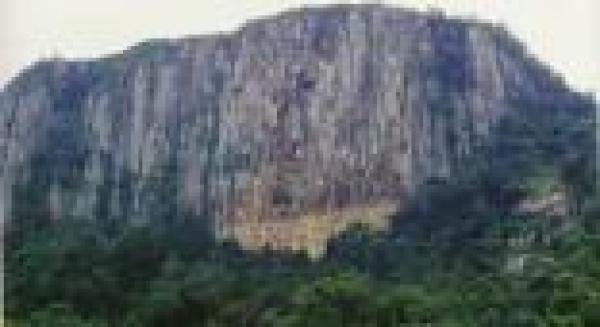Ancient Zulu refuge in the 'place of precipitous heights'
Rare plants and animals make their home in Natal's Ntendeka, a wilderness area within the indigenous Ngome forest.
South Africas smallest and arguably most beautiful wilderness area is Ntendeka, consisting of 5 250 ha of undulating grasslands, verdant forests and dramatic cliffs with breathtaking waterfalls.
Rivers and streams have formed deep valleys and the varied topography has resulted in great variations of temperature, rainfall and vegetation in this relatively small area.
Lying within the Ngome State Forest, Ntendeka remains romantically isolated. Yet, being so small, it is one of Southern Africa's more accessible wilderness areas and can easily be explored on foot from one end to another.
Over 45 km of footpaths exist, most passing deep beneath the forest canopy on a soft carpet of leaves. Some well-trodden routes were established by the area's earliest inhabitants, such as the Zulu Highway, a traditional route leading from the plains to the highlands. This ancient way starts from the police station on the northern boundary and leads hikers past an isiVavine or stone cairn, where it is customary for passers-by to add another stone for good luck.
Woodcutters discovered the potential of this forest way back in 1876. Scores of them moved into the forest and it was heavily exploited for over 20 years until the outbreak of the Anglo-Boer War.
During this period many of the forest's biggest trees (particularly yellowwoods) were felled. Evidence of the woodcutters' saw pits can still be seen, giving some indication of the size of the trees they worked. A stone oven near the western boundary of the wilderness area is another relic from this period.
Despite the ravages of over 20 years of uncontrolled logging, the area has been protected since 1905, and remains a majestic, lush, high-canopy forest, with a rare combination of both coastal and inland tropical forest that is not found in any other conservation area in Natal. The vegetation is thick and richly textured, from delicate, lacy fern fronds to the giant-leaved Streptocarpus.
More than 180 species of trees and shrubs have been recorded here, and rare species include the bastard stinkwood, the Natal hard pear, green witch hazel and the terblanz beech which is also found in Tanzania and Madagascar. Both terrestrial and tree orchids thrive in the green heart of the forest, and in season, Ngome lilies and clivias create a showy display. The tallest, most prolific trees are the forest waterwood, some growing as tall as 30m. Other common trees are the bushwillow, silver oak, tree fuchsia and knobwood.
One of Ntendeka's most intriguing specimens is the strangler fig, and an excellent example can be seen at the Ntendeka camp site. Birds or animals drop seeds into trees, which usually germinate in the forks of branches. Long aerial roots snake around the tree towards the ground, where they establish themselves in the earth. The stem then becomes thicker and stronger, locking the host tree in a fatal embrace.
East of Ntendeka Cliff is an exquisite waterfall, looking fragile and sheer against the hard, horizontal slabs of rock. There are numerous other lovely cascades, streams and fresh, clear pools, many of them bounded by smooth boulders, softened by moss and framed with lacy greenery. Out in the open grasslands umbrella-shaped tree fems seem to march along the watercourses, and in the spring, delicate wildflowers - including coral candelabras, watsonias and white ericas - speckle the landscape among the grass.
A variety of animals live unobtrusively in the wilderness area, including baboon, samango monkey, vervet monkey, grey, blue and red duiker, bushbuck, bushpig, dassies, porcupine, caracal, and many other smaller creatures such as snakes, beetles, butterflies and frogs.
Bird life is more prolific, with nearly 200 species having been recorded in the Ntendeka area - including some endangered birds such as white stork, martial eagle, house martin and blue swallow. You might also see the comical bald ibis, secretary bird, purple-crested loerie, crowned eagle and trumpeter hornbill.
Remember that loud conversation and laughter are bound to sabotage your chances of seeing any wildlife. Shy forest creatures will leave their hiding places only if a tranquil atmosphere prevails. The best course of action for seeing the resident animals in their natural habitat is to settle down quietly and patiently in a forest clearing, keep your eyes and ears open and attune your senses to the surroundings. You may be well rewarded.

